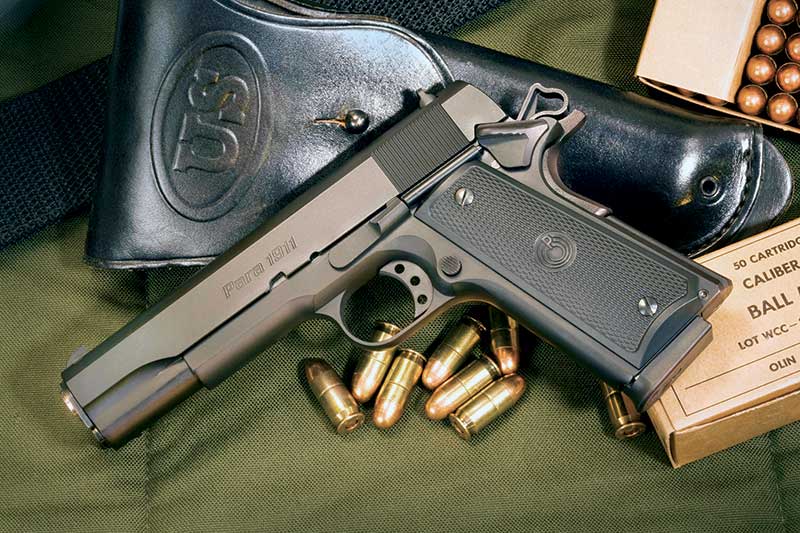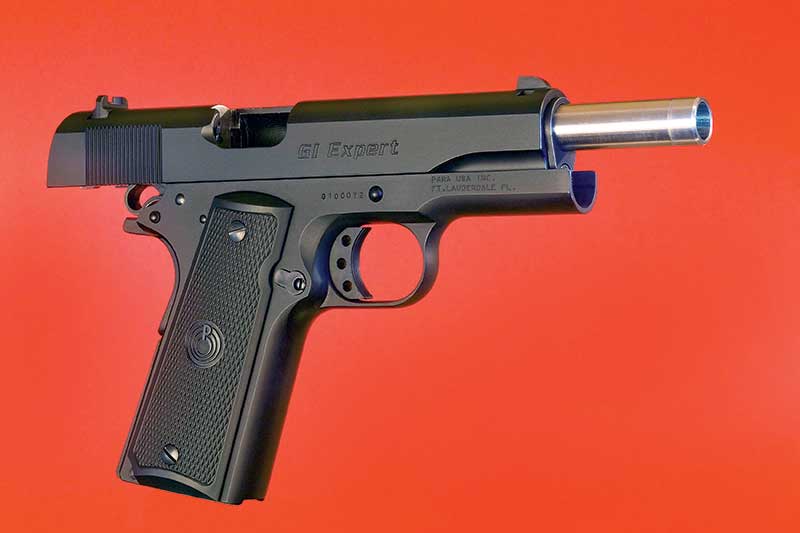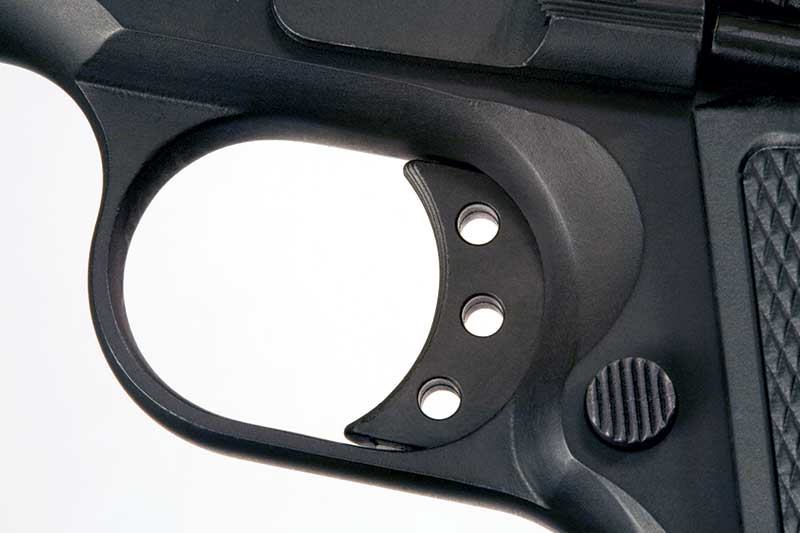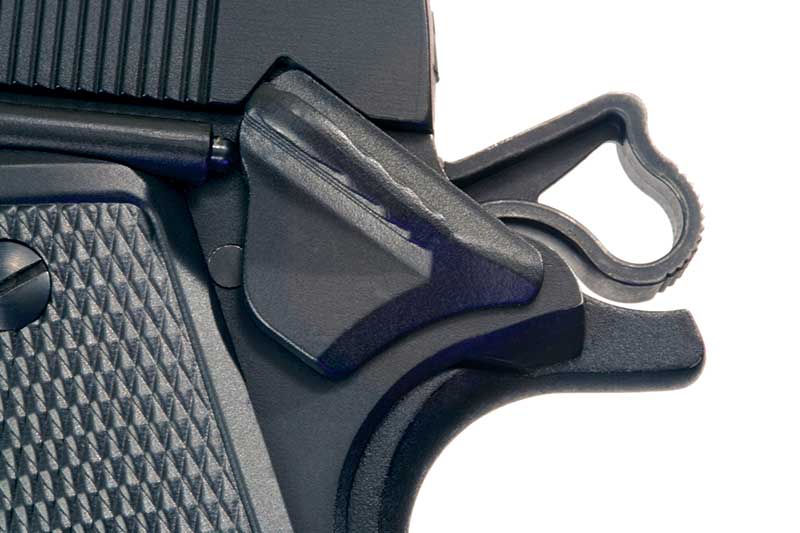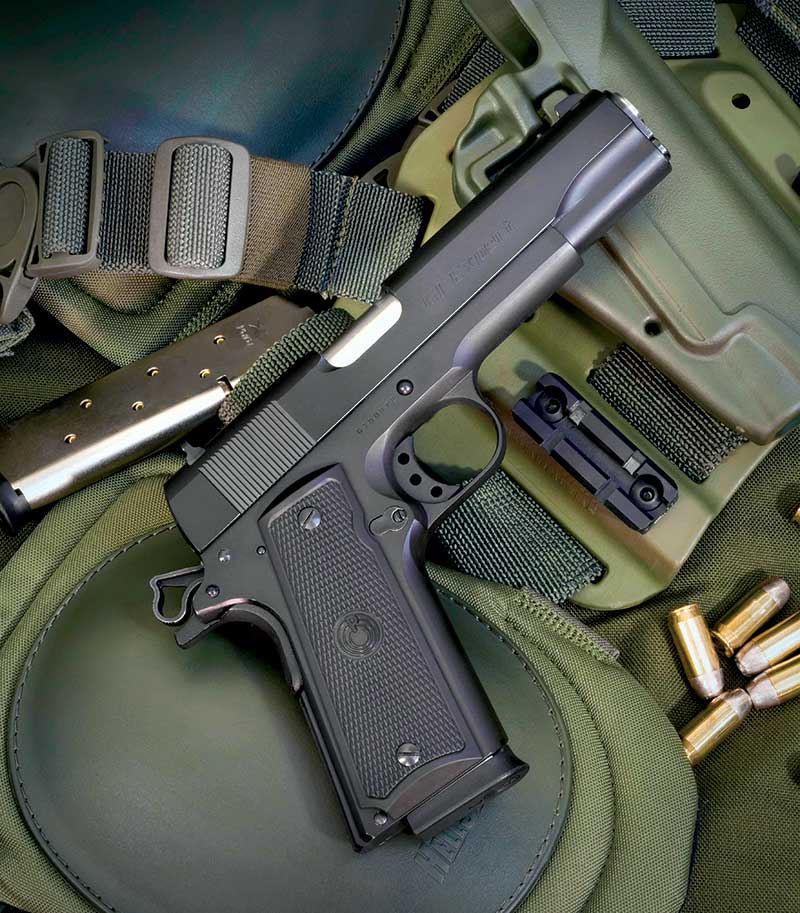Para’s Expert GI
A Humble Look, With Hidden Performance
Most any US veteran sporting grey or missing hair and the aches and pains of age associated with service prior to the introduction of the Beretta M9 is intimately familiar with the M1911. I know I am as I sport all of the above.
During basic training, my first day on the range started off with being issued my first M1911A1. After the drill staff finished with horror stories of mishandling and threats associated with safety violations, my squad steeped to the firing line for our volley. The command, “Fire one round and one round only at the target. Do you understand?” was quickly answered by a crisp, “Yes, Drill Sergeant.”
Next, we all heard bellowed, “Ready on the left, ready on the right, ready on the firing line — FIRE.” Sights aligned, stance just as instructed, the push pull tension of the modified Weaver accomplished and squeeze the trigger. But horror of all horrors — the single report and nudge of recoil was replaced by an extended purrrrrrrrrap and my solid but slightly relaxed arm position rose for the heavens. The seconds following were in slow motion. What happened? That wasn’t anything like they told us.
My thoughts of, crap — I screwed the pooch, were almost instantly reinforced by a riding crop making solid contact with the top of my steel pot helmet closely followed by the DI grabbing my weapon and the words, “Private Douglas, what the hell do you think you’re doing?” screamed less than half an inch from my right ear. After unloading the weapon the DI instructed me to take it to the rear and tell the armorer I had a run-a-way. I did, starting off at double-time only to be rebuked again for running on the range. So went my introduction to John Browning’s “perfect pistol.”
In this day of throw-back NFL jerseys, worship of muscle cars and almost anything else “nostalgic,” the trend of 1911 manufacturers to market “GI” or entry-level 1911s is certainly understandable. It’s good marketing. But even good marketing can’t be effective for long unless the product is good. Para’s new GI Expert fits that bill. It’s a good, solid, entry-level pistol with some well thought out updates.
Some Particulars
Take a look at the grip safety and notice I didn’t say beaver tail grip safety, because it’s not. The grip safety on the GI Expert is more reminiscent of the original 1911. But, in this case, it’s been slightly extended to prevent the hammer bite often realized by the original. It’s also very similar to the original Para P14 wide body grip safety. Combined with the rounded and skeletonized commander style hammer rather than the spur type, they’ve done a nice job of preventing that little owie in the web of your hand.
Para’s firing pin safety is another update. My introduction to the 1911 could have been very different with the inclusion of a firing pin safety. The broken sear causing my 1911 run-a-way could have been mitigated simply by letting off the trigger. Frankly, I don’t remember if I let off the trigger back then or not. But it was a great lesson, even if reinforced by a riding crop to the steel pot — never get too comfortable with your equipment.
The trigger on the GI Expert is a significant improvement. Rather than the 7.5 lb lawyer- or private-proof trigger of years ago, the sample I tested had a 4.5 lb pull. The trigger is of medium length and made from reinforced polymer. Some worshipers will snivel and gripe about the adulteration of “Mr. Browning’s masterpiece” being defiled by the addition of plastic — get over it. It makes the trigger lighter and thus easier to work with.
It this case, it had the best trigger pull of any entry level, out of the box 1911 I’ve ever shot. There was hardly any take-up and an extremely crisp and consistent break. The reset was about an eighth of an inch, with an audible and tactile “snick.”
Para improved the old pistol sights by replacing them with a modern three-dot system. They also improved the staked front sight with an easily replaceable dovetailed sight. They’re even easy for “old guy eyes” to use. Although the first thing I’d do is black out the rear white dots. But, that comes down to personal preference.
Some Other Stuff
The parkerized finish of yesteryear, even as good as it was, has been replaced with a matte black finish or what Para calls “Covert Black Para Kote.” The baked-on finish is quite handsome and very durable and straight edges have been softened. By no means is it a “melt job” but it won’t cut you during handling and malfunction drills as some entry-level guns have a tendency to do.
I had it in and out of leather many times with not a hit of marring. But, the impressive thing about the finish was the 200 draw cycles from a kydex rig with no observable wear.
The barrel is one-piece stainless steel and unlike on many of Para’s guns, it’s not ramped. The barrel and ramp are separate as in the traditional gun. Thank goodness, the guide rod is the standard original system as well — not the one-piece or two-piece full-length system favored by some today. It makes disassembly and re-assembly easy and familiar.
The gun is tight but not too tight. This is unlike my first 1911. You could hear that thing rattle in the holster like a Yugo doing 70 down a dirt mountain road. The standard barrel bushing is finger tight and can easily be removed and reinstalled by hand without having to use a cheater bar on your bushing wrench.
The thumb safety and slide stop are just slightly oversized from original specs — hardly noticeable visually, but just about right from a tactile standpoint. The bevel of the magazine well is done very nicely with function in mind, as is the lowered and ever so slightly flared ejection port.
It Shoots
If my first 1911 could hold a 6″ group at 15 yards I’d be surprised. Para’s GI Expert was great to shoot, and held 1.5″ at 15 yards with Federal’s American Eagle 230 gr. ball. At 25 yards it was slightly less than 2″ with 230 gr. Federal Hydra-Shok.
After initially lubricating the gun with some Militech-1, a couple friends and I shot the GI Expert for about four hours without a single malfunction. No, really. It was steady as a rock, never letting down the expectation of reliability associated with the 1911’s reputation.
With that kind of reliability and all that inch-stuff aside, I’m confident the gun would get you through a really bad day. And after all, that’s what really counts, doesn’t it?
For more info: (704) 930-7600

